The lie that seems true, the tricks of the cinema
1986/02/01 Portugal, Xabier Iturria: Elhuyar aldizkaria
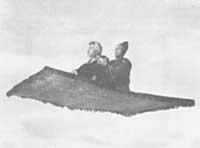
Several times, when we went to see a movie, we asked ourselves: What brings us to the cinema? What, in short, are the reasons that lead us to get into that darkness? What are the bases of our hobby?
Do we spend two hours in front of a screen because we want to escape everyday problems? Or maybe because we want to see our dreams become reality in others? Will it not be until no one looks at us, because we want to capture the view of voyeur?
We all know that cinema is not a reality, but a reflection of it. Both fiction and documentary, what we see on the screen is only an image sent by a machine, in the form of reality, but ultimately a decomposed image.
What is it but a cinema, a trio or an optical effect? The goal of these tricks is to make the impossible possible.
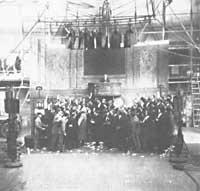
The factor that attracts our attention depends on a particularity of these images: In this case cinema is a mobile image, but the reason is another. At a certain speed the frames of the film, constantly projected, produce us the sensation of movement.
If someone continues to read this article, knowing what the tricks of cinema consist of can mean an outdated cinema.
Cinema tricks are not based on the magic of a magician or a manipulator, but on technique.
G. From Meliés to S. "2.001", G. of Kubrick. Even Lucas' "Star wars" films, the trick is one of the fundamental pillars of this seventh art.
Whether optical or acoustic, scenic or camera, these trains have a lot to do with lighting and animation.
As if it were Pandora's box, the camera keeps many mysteries. However, do not think that opening the box will open all diseases. The hope of what will remain within can strengthen our understanding and critical behavior.
Knowing how to read the image will not only get away, but will bring autonomy to the world around us.
"A viewer concerned about the main camera and assembly techniques will not be less interested than the other for the closure that the film relates, but will not forget that the tricks and the most beautiful effects are only some of the means to achieve a goal." (J. M. L. Peters. "La education cinematographique". UNESCO. Paris. 1961. Page 57).
Critical behavior with the film's message will help us get a personal opinion, but we must not forget that criticizing or rejecting the film's message is not enough to destroy the influence of its images.
These lines, taking into account the extent of the work, cannot have theses. That is why I ask you to consider it as a prologue to an increasingly necessary reading of images.
Image movement
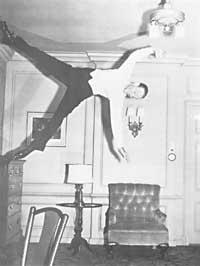
It would be long to indicate all the techniques. On the other hand, some of them, at least from a cinematographic point of view, do not have, despite their rarity, great interest. Decorations and models have always immersed us in the reality of appearance, but this effect obviously has no mystery. For example, to be able to fill the Colosseum of Rome, to cheapen with less extra, to place cardboard dolls in the upper rows, or to be able to indicate that the actor is going up to a complicated wall, placing the camera in the place that corresponds to the logic, which is enough of a decoration lying on the ground, etc.
Therefore, we have to leave many special effects on the inkwell, as the simplest tricks, such as the disappearance of characters, the interruption of shooting, etc.
If we defined cinema as an image that moves, nobody will be surprised if we start with the study of the tricks that have this movement as axis.
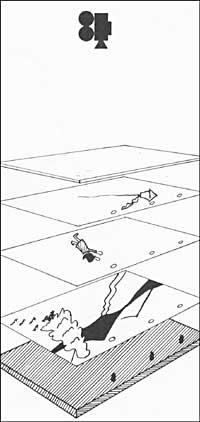
By filming more than 24 frames per second, when projected at normal speed, the movement will be slower as the speed decreases as they need more time.
If we film less than 24 frames per second, the movement accelerates, as we see more frames than those filmed in that second.
Another system would be to change the direction of the movement. If during filming we are filling an empty pool, the overturning of these frames will cause the opposite effect, as if we were opening a step in a drain. For today's cinema, increasingly based on Special Effects, these changes of movement and speed are to be appreciated.
Space and time
The silences that cinema tells us can always be placed in a time and in a space. In order to appreciate this space, most fiction films require an atmosphere that is concretized in decorations, objects and dresses.
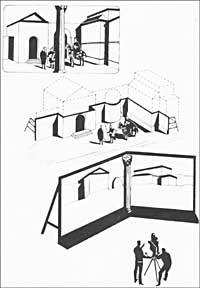
The economic costs generated by this work must be taken into account to believe in that aspect.
Throughout the history of cinema there have been many tricks that have been invented to reduce these costs: those of forming decorated on the one hand and those that, despite not being together in the shoot, have been created to introduce the characters in that decoration.
In this case, we should differentiate the phenomena that occur within the chamber from those that occur in front of the chamber.
Previously, the most operating system was based on the Dunning effect.
To obtain a composite image we must start from a separation of paintings. A positive film turned red on the one hand is used as the background of the scene filmed previously. This positive plays the role of filter, obtaining the negative of the character against a neutral background illuminated in green blue, illuminated in red.
The positive does not let pass that blue and green light in the background, and then the character on the one hand and the decoration that was in positive are recorded in the panchromatic negative.
Today and thanks to television, this system is well known. Through a "creative effect", studies mix any decoration and character, to express that a presenter or singer is in that environment.
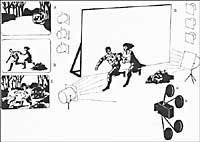
In this electronic effect called "Chroma Key" we need two video signals or images. The image (B) that comes from the first source is shown against a blue background. When mixed with the figure of the decoration that comes to us from the second source (A), the composers that the character does not cover are formed with the image that comes from A.
This same effect can be achieved by placing several objects in front of the camera. If we put something between the camera and our character, both overlap in a single image.
Here are some examples of this technique:
- Effect of costume.
Once marked, cut and placed the silk that interests us in a black cardboard, we have a piece of image framed. In this way, we can give the feeling that we are looking for binoculars or the hole of a lock.
To facilitate the measurement of the effect we want to achieve, we must take into account the distance between the cardboard and the character, since the distance or closeness that occurs in the film will be more real.
- Since the years of Melies, cinema is based on fiction. Without forgetting the importance of documentary, the needs of fiction have accelerated and strengthened the evolution of seventh art techniques, especially in the years in which robotics and the world of computers are dominating.
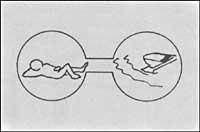
A street in Barcelona, by chance of filming, will turn into a street in London or Havana, the port of Hondarribia will become a French port; when we thought we were in the vicinity of Rome, we did not suspect that we could be in front of a field in Segovia, and what about the areas of Almeria when checking that in these lands have filmed multitude of westers?
When the elements we need are far from our possibilities, we can always count on the choice of studies. Houses, accommodation, streets and many other objects of study will make our dream come true.
When it comes to believing in the appearance of Africa or the Poles, cinema has not encountered great obstacles. But often the costs can be huge and then it is necessary to have another solution.
The "matte paintings" is based on what has been said so far. This effect supports the transformation of any decoration. To do this, the elements we want to add to the decoration are painted with a clear glass or oil of a cut aluminum foil. When overlapping the two images taken by the camera, in the filming image we will see these two elements joined together. In this way, a house can have the life we want, respecting the perspective, painting on it the amount we want about its height and the style that suits us.
We cannot forget here the effect based on "reserve". This technique has traditionally been used in photography and also in cinema.
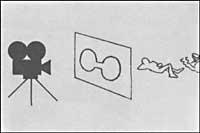
The so-called "reserve" consists of covering a part of the frame during the rolling, so that it is not impressive; later, taking advantage of the complement of the previous one, we can complete the image that interests us.
Many years ago it was based on certain transparent effects. The landscape seen from a train or from it was not behind the train or tourism, but on a screen. Most of the time the verb did not move, but what was projected on the screen made the scene have a movement effect. In this case, the screen was not, as in the three previous examples, between the camera and the character, but behind, to the screen where a projector sent the background that needed that scene.
Sometimes this background was painted and with a bionbo that mobile decoration was collected from one side to the other, creating the appearance of the movement.
There is the possibility of obtaining a composite image without using screens or backgrounds that do not appear in the shoot.
To do this, the authors use "overpressure". Let us think that we want a transparent ghost to appear against a house. First the film Etxea is broadcast and then, above that fraction, and against a black background, the ghost is thrown.
By superimposing these two images we have formed the composite image and the effect we wanted to achieve.
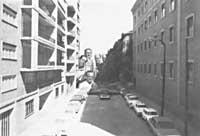
In many occasions the reflective screen, S. '2' by Kurbrick. It is the basis of several tricks that appears in the film 001".
This screen returns the light sent to you. The projector projects the image against a glass. This glass is both gadena and reflective. Being reflective sends the image to the screen. The screen will return the same image and the glass, being transparent, lets you pass the image that goes to the camera. The background is complete. Now we put the actre under great lights.
Let us now think that we project a slide against an illuminated wall. Even if we check the projection, we will see nothing. The lights in the room override the Projector. Through this example you can see why the actor does not create any obstacles to projection. We mix background and actor.
Then, and in order to complete this article, we should try to show and deepen the techniques and tricks of animated images, but below we attach only one information.
The animated film starts from the shooting frame by frame of the movements of the characters. This does not mean that you have to repeat the entire drawing several times, much less. Through the “multiplan exchange” we can overlay all the necessary planes, repeating only the character or object that moves. The fund and all other planes do not require any modification, in most cases. This system represents a great economic and labor advance.
From time to time, in films that are shot with real characters, a technique called "dynamation" is used. In this case, when mixing the actual action with puppets or animated images, we must use a system based on stop-motion (frame to frame).
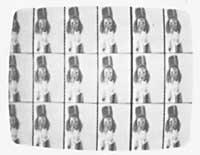
Flexible models are used for this purpose. In each frame we must modify the position of this model according to the movement we want to achieve. Then, to mix the real action with the models, we must use the “travelling-mates”. In this case, well-lit models must be filmed against a screen, frame by frame.
Secondly, you have to film the models at high speed. Finally, with character filmmakers. The actors will have a white background behind them, without any decoration.
The mixture of these three processes ends in the laboratory, where all these movements are related.
George Pal and Harryhaus have used this system on numerous occasions. We all remember, for example, the tricks Harryhausen used to express the violence between mythological characters in films such as "Jason and the Argonauts" or "Simbad and the Princess".
However, the sophistication of current techniques is growing. In this sense, the advancement of the computer in this world of animation is unlimited. Today, by specifying in each scene the first and last movement of the characters, we can get everyone else thanks to the computer.
The technique of working with dolls is also based on the aforementioned "photogram-frame". The only change is the shooting, since you do not have to draw, but move little by little the dolls.
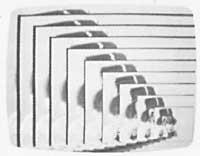
On the other hand, we can not finish this article without clarifying the effects that today so well-known we have among us thanks to the television program and the clip!.
To understand the effects we often see in series, we must start from the basic difference between cinema and television: in the case of cinema, for example, if we have celluloid on television we use totally electronic elements.
Maybe this uneven F. F. We began to relativize through programs by filmmakers like Coppola ("One from the heart"), but for the moment that difference is necessary in the use and presentation of images.
On the other hand, in the field of cinema we have the assembly as an element necessary to reach the final product, but in the field of television or video we know the final design of the images from each signal source as edition.
The sophistication of the current instrumentation allows to complete this layout with a "Special Effects Creator".
Among the effects that we can find in it, the sudden chain or that of the variant is easily understandable thanks to our experience with the synchronous slide projectors.
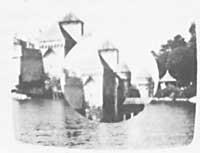
The additive mixture, so used in the musical series, consists of making a double electronic signal, with the result of a double image.
The curtains ("wipes"), the expiries or covers, the overprint of images or subtitles, the electronic painting of the image and the Chroma-Kcv previously analyzed do not need much information, but have become a usual effect.
This selection of signals and effects is done by keys that allow to detect the state of operations.
The incorporation of the digital system has meant a qualitative leap.
In the conventional system, the video signal changes its extension depending on the brightness of the scene. Instead, the digital signal does not change continuously over time.
To benefit from the advantages of this difference, it becomes electronic digital information, which transforms the video signal into components.
Once the signal is digitized, the image can be reduced so that it occupies a small part of the screen by changing the size of the points that make up the image.
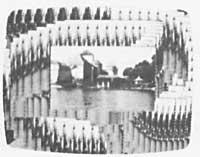
The image can be coerced vertically or horizontally, even its geometry can be determined, producing a perspective effect, can frighten the image or alter the order of the images, reorder the real scene in reverse, etc.
We have only approached the exciting world of image. The understanding of all these effects will prevent us from falling into the manipulation of the image and will become the starting point of the creativity of those who work in this field.
Gradually the imagination and skill of each will be the only limitations of the action of the image.

Gai honi buruzko eduki gehiago
Elhuyarrek garatutako teknologia





